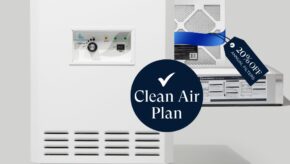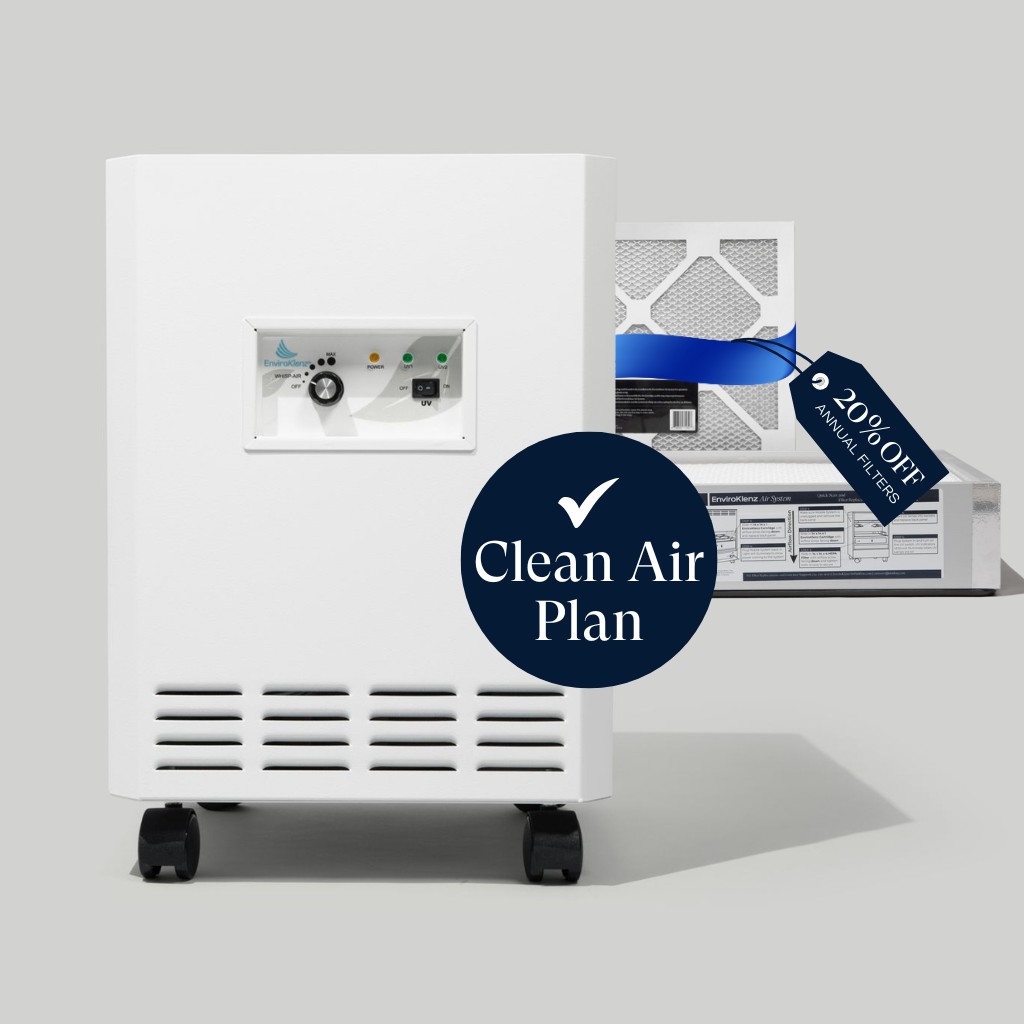EnviroKlenz® in a Physical Therapy Center in the North East
An indoor air quality case study.
Industry Overview
Nursing and rehabilitation centers suffer a high risk of viral transmission among staff and residents due to close contact with patient care, as well as the medical vulnerability of patients. Residents are categorized as high-risk, lending to higher transmission rates and higher death rates of patient-related illness cases.
High levels of PM2.5 have been linked to greater severity and transmission of airborne cardiovascular and respiratory illnesses, according to a study by Harvard T. H. Chan School of Public Health. With this, the common carrier size of airborne viruses is most relevant to measures of PM2.5. Higher PM2.5 levels in the facility can indicate greater vulnerability to airborne transmission and exposure of airborne illnesses.
According to recommendations from ASHRAE, ventilation and filtration are important strategies to reduce and prevent viral illness transmission, doing so through maintenance and enhancement of current HVAC systems, along with additional methods like outdoor ventilation and portable air cleaners.
Air Ventilation Recommendations:
- Increase outdoor air ventilation to dilute indoor air supply
- Utilize directional airflow and relative air pressure in isolation rooms
- Implement additional air cleaning methods to existing HVAC ventilation
- Maintain particulate matter below EPA standard of 10ug/m3 for PM2.5
Study Background
The EnviroKlenz Air System Plus was deployed and operational alongside air quality meters that measure and record particulate matter, stationing multiple EnviroKlenz Air Systems in crucial, high-traffic areas like the gym, dining room, and nurses station throughout the Physical Therapy Center. The EnviroKlenz Air System utilizes a patented adsorptive neutralization process of capturing and removing toxic and noxious odors, chemicals, and pathogens. This is done through multi-stage decontamination, consisting of primary filtration and neutralization through the EnviroKlenz Air Cartridge, followed by UVC and HEPA filtration. The air quality meter provides real-time measurements of particulate matter concentrations (PM1, PM2.5, PM10) and particle size distribution using a combination of multiple light scattering-based particle sensors.
The EnviroKlenz Air Systems and air quality meters operated in the facility as daily schedules were carried out as usual. Air quality readings compared data collected when the EnviroKlenz Air Systems were turned off versus when they were turned on to gauge their impact on particulate reduction.
Test Details
Testing Period: 08/26/21 – 09/16/21
Setting: Crucial, high-traffic areas in Physical Therapy Center; gym, nurses station, and dining room.
Equipment Used: (4) EnviroKlenz Air System Plus unit and (3) lab-grade aerosol measurement instrument, per operational location. Readings were captured in the ranges of PM10, PM2.5, and PM1 (sub-micron-sized)
Running Time: The EnviroKlenz Air Systems were operational in the gym, nursing station, and dining room between 9/01/21 and 9/16/21; for the purpose of the comparative graphs, data was pulled from 09/01/21 – 09/03/21.
Monitor status: The air quality monitor was running between 08/26/21 – 09/16/21; the air quality monitor was turned on several days prior to turning on the air purifier systems to establish baseline air quality readings.
Observation: The air quality measurements from the case study revealed significant spikes in PM2.5 during peak operational hours of high occupancy and activity. As shown by the data collected while the EnviroKlenz Air Systems were turned off, spikes throughout the facility between 11 am and roughly 10 pm measure particulate matter at levels two to three times greater than the national standard, according to EPA’s Clean Air Act. This reveals that greater amounts of particulate matter are generated during these high traffic times.
This data indicates that existing filtration did not demonstrate reduction of these influxes of dangerous air pollution during operational hours, increasing the facility’s overall vulnerability to illnesses and transmission.
Comparing these baseline readings to the data collected when the EnviroKlenz Air Systems were turned on shows how the additional filtration and added air exchanges provide consistent control of particulate matter within the national standards according to the EPA’s Clean Air Act. Data also shows PM2 levels consistently kept within the top 10 percentile of air quality in all locations using the EnviroKlenz Air Systems. The EnviroKlenz Air Systems were able to capture and retain the particulate matter during peak hours of operation.
Comparison to National Average
The above data is depicting two air quality readings taken at the same times of day but on different dates within the testing period, one collecting PM2.5 readings with the EnviroKlenz Air System Plus turned off and one collecting readings with it turned on.
- Initial baseline measurements were taken when the EnviroKlenz Air System Plus was turned off. During this period, spikes in PM2.5 are measured at more than three times greater than the national standard according to EPA’s Clean Air Act, between 11 am and 1 am; the highest peak reached 35 ug/m3.
- The existing filtration did not demonstrate particulate reduction during these peak hours of activity when PM2.5 levels are dangerous and the facility is more vulnerable to airborne illness exposure and transmission.
- During the same peak hours as referenced above, the EnviroKlenz Air System Plus was then turned on and able to maintain consistent PM2.5 levels under the national standard and within the top ten percentile of air quality, illustrating a reduction in PM2.5 with added filtration.
- This demonstrates the efficacy of the EnviroKlenz Air System Plus at capturing and retaining particulates in the given environment, despite various levels of occupancy and activity.
The above data is depicting two air quality readings taken at the same times of day but on different dates within the testing period, one collecting PM2.5 readings with the EnviroKlenz Air System Plus turned off and one collecting readings with it turned on.
- Initial baseline measurements were taken when the EnviroKlenz Air System Plus was turned off. The data shows consistent measurements of PM2.5 at levels two to three times greater than the national standard, according to EPA’s Clean Air Act, which were maintained at all times of the day.
- This demonstrates how existing filtration did not demonstrate reduction of dangerous levels of PM2.5, but rather maintained them at this inadequate level.
- During the same span of time as referenced above, the EnviroKlenz Air System Plus was then turned on and able to maintain consistent PM2.5 levels under the national standard and within the top ten percentile of air quality, illustrating a reduction in PM2.5 with the added filtration.
- This demonstrates the efficacy of the EnviroKlenz Air System Plus at capturing and retaining particulates in the given environment, and maintaining this level over time.







